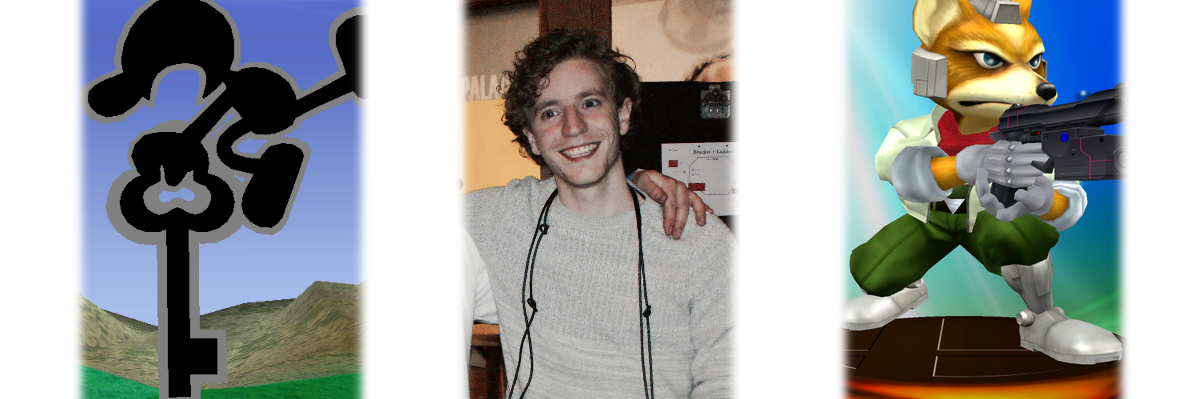Unless you are one of the unlucky ones who have a remote, small scene, or one of the lucky ones who are by far the best in the region, odds are that you can play with people of a couple of different skill levels. You’ll probably have people who are better than you, maybe by a large margin. You’ll almost certainly have peers (or rivals) and hopefully you’ll have some people you can certainly beat. In this 3-piece article I will go over my ways to practice with every single player in your journey to become better. We will first look at how to practice against players much better than you, then how you can utilize peers to optimize your practice and finally how newbs are still valuable practice partners, even for the best players. These pieces will be released on April 19th, 21st and 23th.
Against worse players
Playing against worse players can be both great fun and one of the dullest experiences in your Melee career. In this category I count people who you consistently beat with 2 or more stocks left and you win 90% of your matches against.
You may be tempted to play your secondaries or not play seriously, which is of course your own free choice, but I feel like that is a waste of practice time (unless you seriously want to get better secondaries, but most don’t). You might think you can try a lot of different options and explore your play a bit by doing new things, but this is not effective against lower level players. If you do something new that is just objectively bad, which any player of your own skill level might punish, the worse player might not punish it and you might think the option is better than it is.
In my opinion, a much more effective way is to treat worse players as 20XX bots that have a reasonable ability to fight back. Try to optimize your punish game, tech chases and edgeguards. Basically, try to play as tight as possible, but don’t think about it too much. What this does is that it increases the level of your auto-pilot. The better your auto-pilot becomes, the more consistent results you will get in tournament matches. One of my favourite activities to keep myself in the mindset of playing well against worse players is to see if I can 4-stock them. While some might say they don’t care about stock count, they’ll still feel a little good about getting a 4-stock on someone. Well, why not do it again. And again. See how many 4-stocks you can get in a row on this poor soul who happens to be your victim. It will force you to have good punishes and especially play safe and not lose stocks to dumb gimps. You would be doing your opponent a disservice by not beating them as hard as possible, because they can learn so much from you (as was detailed in the section Against better players).
Another approach is finding glaring flaws in your neutral. If a player who you consistently beat in most aspects of the game is able to hit you, you must have made a pretty obvious mistake (or they could just have gotten lucky). Try to recognize these situations and adapt to them as fast as you can. Did you do a stupid Nair approach and got grabbed for it? Next time, do it again but don’t hold your forward momentum and retreat a little bit. Did your opponent whiff their grab? Good, you adapted a flaw from your game. While this is not going to work against better players, it is good to practice adapting versus worse players to slowly get better at it against others.
The final approach is my favourite and, in my opinion, the absolute BEST method to play with new players. This is the teaching method. Instead of focusing on yourself, help them get better. It is always healthy for any region to have stronger players, and newer players (or lower skilled players) will stay around if you engage with them in a more meaningful manner than just 4-stocking them over and over. Did you notice them doing some bad option over and over? Maybe try to draw their attention to it without spoiling what’s going on. “Why do you keep getting hit in the corner?” is much more helpful than saying “Stop doing full jump as soon as you’re in your shield near the edge.” It’s the old adage of teaching a man to fish. If you can get a player to critically look at their mistakes, they are much more likely to adapt and also recognize bad habits in the future.
I really want to encourage better players to play with new or low-level players because there is still plenty of opportunity of growth, for both players. Nothing is more satisfying than seeing a new player you’ve trained do well in bracket, or even become your rival. Be a leader, adopt a newb!
To conclude this series, every single player has something to teach you. Do not stuff at low level players, don’t be afraid to play top level players and make sure you keep yourself honest by playing your peers often enough. I hope this helped some of you and I most certainly hope you enjoyed it!

